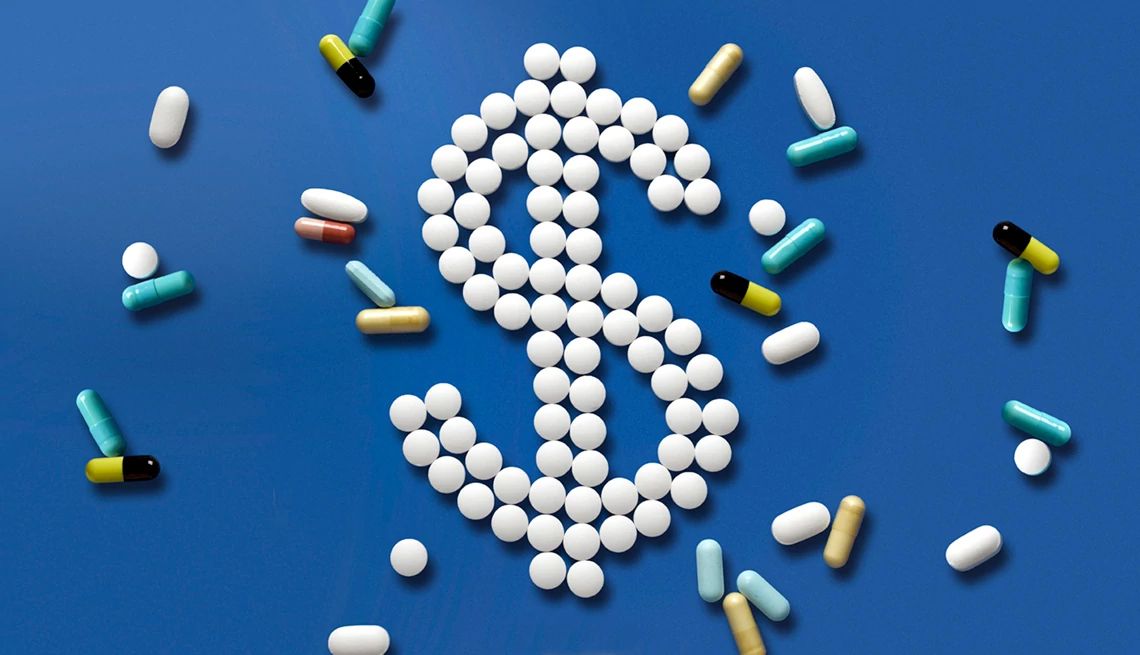AARP Hearing Center


The prices for 25 prescription drugs that Medicare’s Part D spends the most on have nearly doubled since they first became available an average of 11 years ago, a new report from AARP finds.
The price tags of these brand-name prescriptions have increased by an average of 98 percent since entering the market, and the vast majority of the price increases have exceeded the annual rate of inflation, according to an analysis of Medicare data conducted by AARP’s Public Policy Institute.
The 25 medications, which do not include the 10 popular drugs already selected for the first round of Medicare price negotiation, are used by more than 7 million enrollees to treat conditions such as diabetes, cancer and chronic lung disease, and were responsible for nearly $50 billion in total Part D spending in 2022.
“Brand-name drug prices have been increasing faster than the rate of general inflation for decades, putting life-saving medications out of reach for millions of patients who need them,” Leigh Purvis, author of the report and AARP’s prescription drug policy principal, said in a statement.
It’s important to note that these hikes typically build on already high launch prices. According to AARP’s report, released Jan. 9, the median price of a new brand-name prescription drug is reportedly an estimated $300,000 per year.
Top 25 Medicare Part D drugs not currently selected for Medicare drug price negotiation
Brand-name drugs with the highest total Medicare Part D spending in 2022
- Trulicity (diabetes)
- Ozempic (diabetes)
- Trelegy Ellipta (COPD, asthma)
- Biktarvy (HIV)
- Xtandi (cancer)
- Humalog (diabetes)
- Ibrance (cancer)
- Jakafi (cancer)
- Ofev (pulmonary fibrosis)
- Pomalyst (cancer)
- Levemir (diabetes)
- Tresiba (diabetes)
- Linzess (irritable bowel syndrome with constipation)
- Victoza (diabetes)
- Breo Ellipta (COPD, asthma)
- Tradjenta (diabetes)
- Creon (exocrine pancreatic insufficiency)
- Ingrezza (tardive dyskinesia)
- Janumet (diabetes)
- Calquence (cancer)
- Tagrisso (cancer)
- Epclusa (hepatitis C)
- Xifaxan (gastrointestinal conditions)
- Vyndamax (cardiomyopathy)
- Cabometyx (cancer)
Nearly 90 percent of adults 65 and older rely on prescription medications, according to a recent report from the Centers for Disease Control and Prevention (CDC), but mounting research shows that many Americans struggle to afford them.
A 2023 report published in JAMA Network Open found that a significant share of older adults adopt cost-coping strategies — such as skipping medication doses or delaying prescription refills — to save money on their drugs. And a 2024 survey from AARP found that nearly half of adults ages 50-plus have skipped filling their prescriptions — or know someone who has — due to cost.

































































More From AARP
What to Know About the New Medicare Prescription Payment Plan
Starting in 2025, there's a new way to pay for your drugs3 Big Medicare Prescription Drug Changes
Big changes are coming to Medicare's prescription drug coverage (known as Part D) that could impact how you pay for your medications — and how much you pay. Here's what you need to know as we head into the new year.
Millions of Medicare Enrollees Receive Free Vaccines
Under prescription drug law, beneficiaries saved more than $400 million in out-of-pocket costs